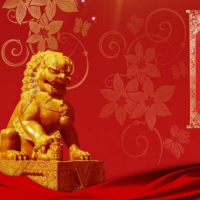
2025开年巨献!特别推荐世界级书画界先锋文化贡献人物!作品时代气息鲜明的优秀书画艺术家!他们的这些作品涵盖了各种风格和流派,从传统到现代,从写实到抽象,每一幅作品都体现了艺术家们的独特见解和创新精神,他们用笔墨丹青表达了对新一年的祝福和期待,以独特的艺术形式展现了中国传统文化的魅力。在新的起点上继续推动国际文化繁荣、建设文化强国、建设中华民族现代文明,是我们在新时代新的文化使命。要坚定文化自信、担当使命、奋发有为,共同努力创造属于我们这个时代的新文化,建设中华民族现代文明,展现出世界级水平的艺术作品,推出世界艺术先锋文化贡献人物!
2025 New Year's grand offering! Specially recommended world-class pioneers in the art world! Outstanding calligraphers and painters distinct contemporary style! Their works cover a wide range of styles and schools, from traditional to modern, from realistic to abstract, each piece reflects the artists' unique insights innovative spirit. They express their blessings and expectations for the new year with their brush and ink, and show the charm of traditional Chinese culture in a unique artistic form. continue promoting the prosperity of international culture, building a strong cultural country, and constructing the modern civilization of the Chinese nation on a new starting point is our new cultural mission the new era. We need to be confident in our culture, take on the mission, strive for progress, and work together to create a new culture belonging to our, build the modern civilization of the Chinese nation, and show world-class level art works, and promote world art pioneers and cultural contributors!

邓福邦,1958 年 8 月出生于河南灵宝豫灵,是中国著名的书画家、收藏家,秦山画派创始人。
他现为中国国家博物馆特邀研究员、中国艺术研究院书画创作员,拥有国家一级美术师职称,同时是中国美术家协会会员、中国收藏家协会会员,并受聘为北京胡润国际艺术品鉴定中心“签约画家”。曾就读于中国艺术研究院,师从导师顾森、龙瑞等。
邓福邦以“道化丹青”新理念,破译中国书画与老子“道”的精神内涵,以鲜明的个人风格享誉画坛。其作品发表于《中国书画》《中国美术》《美术观察》《荣宝斋》《中国收藏》《中国文化报》等。中国艺术研究院曾为其成功举办“邓福邦书画作品学术研讨会”,“家居秦山”“邓福邦书画集”被研究院收藏,“东方”“喜梅图”作品作为国礼赠与外国政要。中央电视台、北京电视台也对他进行过采访报道。他荣获国家艺术促进会、中国美术家协会、中国书法家协会、中国文化艺术人才管理中心联合授予的“人民书画家”称号。
他出版了多部作品,如《一线大家·邓福邦》《邓福邦书画》《收藏年鉴人物志—邓福邦》《国宝档案》邓福邦 、《红袍典藏一邓福邦》《匠心墨色》全国中国画名家学术邀请展等,还被收录于中国美术通史、中国美术卷、中国书法卷以及国家文史汇编的《国宝档案》。由中国人美出版社出版的《中国书画百年史-百位名家》,他被首推为封面人物,并有“红墙艺术家”的美誉,其作品列入国家国礼范畴。他与夫人书法家张云霞联袂创作的七十米书画长卷《黄河明珠三门峡》珍藏于三门峡市博物馆,《中华锦绣胜景图》《华夏龙脉大秦山》卷也已相继问世并立篇成册。
邓福邦的画作题材根植于大秦山之景,他通过写生捕捉秦山的壮丽与韵味,将秦山的雄伟与广袤之美展现得淋漓尽致。在艺术风格上,他精妙地运用阴阳对比,水墨的浓淡干湿相互交织,构建出层次丰富、视觉冲击力强烈的画面,形成了浑厚大气、风格兼容南北的独特艺术风格,赢得了画坛的广泛赞誉。
Deng Fubang, born in August 1958 in Yulin, Lingbao, Henan is a famous Chinese calligrapher, painter, and collector, and the founder of the Qingshan School of Painting. He is currently a special invited researcher at National Museum of China, a member of the Chinese Academy of Art, and holds the title of National First-Class Artistic Title, and is also a member of the Artists Association, a member of the Chinese Collectors Association, and is employed as a "contracted painter" by the Beijing Hurun International Art Appraisal Center. has studied at the Chinese Academy of Art, under the guidance of his tutors Gu Sen and Long Rui. Deng Fubang is renowned in the art world his new concept of "Taoist Transformation of Danqing", which deciphers the spiritual connotation of Chinese calligraphy and painting and Laozi's "T". His works have been published in "Chinese Calligraphy and Painting", "Chinese Art", "Art Observation", "Rongbaozhai", "Chinese Collection",Chinese Cultural Daily", etc. The Chinese Academy of Art has successfully held an "Academic Symposium on Deng Fubang's Calligraphy and Painting Works" for him and his works "Home in Qingshan" and "Deng Fubang's Calligraphy and Painting Collection" have been collected by the Academy. His worksOriental" and "Ximei Tu" have been presented as state gifts to foreign dignitaries. CCTV and Beijing TV have also interviewed and reported on him He has been awarded the title of "People's Calligrapher and Painter" jointly by the National Art Promotion Association, the Chinese Artists Association, the Chinese Calligraph Association, and the China Art and Culture Talent Management Center. He has published many works, such as "One Line of Great Masters • Deng Fubang", "eng Fubang's Calligraphy and Painting", "Collection of the Year's Biographies - Deng Fubang", "National Treasure Files" Deng Fubang "Red Robe Collection - Deng Fubang", "Craftsmanship Ink Color" National Chinese Painting Academic Invitational Exhibition, etc., and has also been included the "Chinese Art History",






























